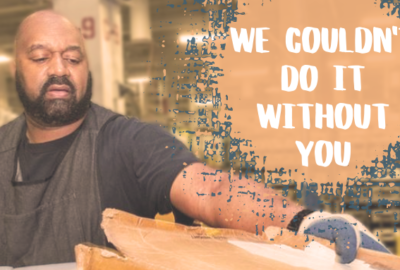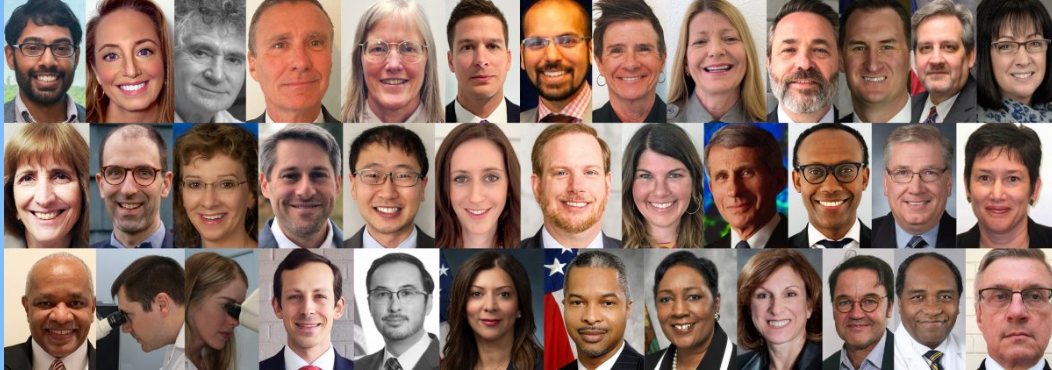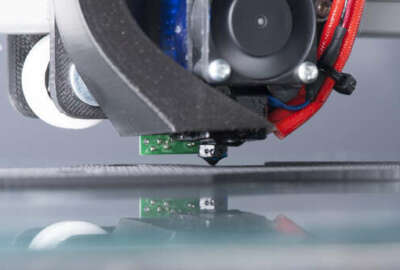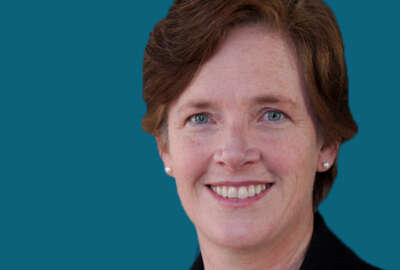
This year’s Service to America Medal finalists
27 career federal employees are finalists in this year's Service to America Medals for contributions to the betterment of their agencies' missions.
Best listening experience is on Chrome, Firefox or Safari. Subscribe to Federal Drive’s daily audio interviews on Apple Podcasts or PodcastOne.
27 career federal employees are finalists in this year’s Service to America Medals. Some have been on the job for decades. Some are barely out of graduate school. But they’ve all made significant contributions to the betterment of their agencies’ missions, and to the life of the nation. For more on this year’s program, Federal Drive with Tom Temin turned to the president and CEO of the Partnership for Public Service, Max Stier. Full list of the honorees here.
Interview transcript:
Tom Temin: Max, good to have you back.
Max Stier: Great to be here
Tom Temin: This year I see of course, one of the finalists, if it was ever a doubt that he would be a finalist, is Dr. Fauci of NIH for all of the work related to the COVID-19. But it’s really not just his work currently, is it?
Max Stier: No, not at all. And in point of fact, the nomination period essentially was closed by the time the pandemic hit. Tony Fauci is an extraordinary public servant. What’s amazing to me is that there are many, many, many other Tony Faucis out there that no one knows about. So he deserves fantastic credit for all the important work he’s doing. And we all oughta know that there are a lot of people who aren’t getting any credit at all. Nonetheless are vital to our health and welfare. And that’s what this program is about.
Tom Temin: And to get to the finalists this year, did the committee have the same bumper crop of nominations as it normally does?
Max Stier: You know, I think we might have been slightly higher. And again, as I said, this occurred before the pandemic. It’s fascinating to me, you know, bluntly, there’s not a culture of recognition in the federal government. There’s a lot of infrastructure to find problems, and not a lot to find the good things that are being done. So we have to work hard to get the nominations. There are extraordinary stories out there. But there isn’t a normal process for floating them up. But that’s the purpose of the program is to try to, again, give attention to the people who really deserve it. And we’ll get better government, if we actually focus on the great things that are happening and not only the problems.
Tom Temin: And one of the things I like about this is that while many of the nominees have done things that are highly visible to the public, like for example, Dr. Fauci has been involved And pandemics and threats of pandemics numerous times before the current time, as he pointed out, but then there are people behind the scenes. I’m looking at one where they worked. Mark Andrew Barza, worked on the Navy’s program to refuel a carrier. And I’m guessing the average person in the public has no idea what’s involved with refueling a carrier. But it’s enormously important to national security, and it’s really expensive. There’s a lot that can go wrong.
Max Stier: Absolutely. It’s extraordinary the range of things that these finalists are doing some of my favorite stories you mentioned, we have Emerging Leaders category, folks that are new to the work world and yet, you know, are changing our world. A couple of stories that I find fascinating are, you know, Vikram Krishnasamy, who is at the CDC, and he’s been working with law enforcement to make sure that when opioid arrests are made, in order to bring down drug dealers, etc., that here’s actually a public health connection so the folks that are addicted can actually get help. And to me the idea of collaborating between law enforcement and public health is so important. And that’s what he does. Or Andrew Laurence and Shannon Ferguson, who were at the Customs and Border Protection, who had his amazing specialization of being able to analyze microscopic pollen grains to determine where drugs were produced and other important travel histories for crime victims. So they’re able to figure out the route was that drugs were taken or to be able to track people through pollen that may be on them. It’s just, you know, hugely interesting. And as you say, No one knows about it, and they ought to because, again, this is the breath of federal achievement that’s essential to our health and well being and we need to know more about it, support it, and recognize these folks.
Tom Temin: And then there’s some people from the legislative branch, one I was really pleased to see was Chris Mihm from the Government Accountability Office. And he’s been just a watchdog for so long on fraud, waste and abuse.
Max Stier: Chris is exceptional. And one of the things that I love about GAO is that it’s really the only entity that has true enterprise government wide understanding about what’s happening. And Chris’s got his finger on the pulse. He is someone who understands how it all fits together. And he’s focused on making the government work better. And one of the most important aspects of the oversight community to me is not looking backwards but looking forward. The windshield being way broader than the rearview mirror and trying to prevent problems from happening. So Chris has got an exceptional career, he is helped save literally billions of dollars, and it made our government work better. He’s an exceptional human being.
Tom Temin: And there’s another aspect This year, I’m looking at Beth Ripley from the Veterans Affairs Department out in Seattle. And she has been helping to establish this 3D printing network, not only in VA, but involving other agencies as well. FDA, I believe is involved. And again, this is something that was ongoing before the COVID-19 scare and threat. But now it’s coming to play in that in that they are able to 3D print supplies and items needed for frontline workers. So I think the lesson there is, the better the government gets in general, the better it is in emergencies.
Max Stier: You’re absolutely right. And it is fascinating. And ill understood that the federal government is actually involved in virtually every department, if not every department, in pandemic and economic crisis response and yours is a great example that the 3D printing at the VA. Another one is another VA group that is responsible for developing telehealth options for veterans and they from something like 2000 visits a day, through telehealth to 20,000, you know, virtually overnight, and that number keeps increasing. So the government has really stepped up, there’s a lot of innovation going on. One of the things that I think I hope to see is a harvesting of these innovations so that when we do get past this, and we will, that our government will get better and be able to utilize the innovations that are a result of the crisis as steady state, you know, for an activity for the government. So I think that there, you know, again, this is a horrible thing we’re going through, but we need to do some learning and get better through it. And I think we will.
Tom Temin: We should point out that we’re on the verge of Public Service Recognition Week, which is usually kind of a gala, lots of things happening, but I know that not much is happening publicly in the sense of people gathering, but give us the update on that particular phenomenon which people have been looking forward to for many years.
Max Stier: Well, this is exactly why we are releasing the winners of the or the honorees for the Service to America Medals, the Samuel J. Heyman Service for America Medals right now and that’s because this week is designated as a point in time for us to stop and recognize public servants at all levels federal, state and local. And it’s important to do it. Again, we won’t get great service for more government workers if we don’t support those that are doing extraordinary things. And so there are ongoing sets of activities. This may be that we don’t have the run that we were supposed to do. But as you say, we are released these honorees right now we’ll be doing an event at some of these honorees at Thursday at 7pm. You can find the details on our website. So we are moving everything virtual. That’s the you know, the world we live in today. And that may even be make a larger audience for for things like that. But the point here is that we do need to step back and recognize what we have and support it. And that’s the point of Public Service Recognition Week and the Samuel J. Heyman Service to America Medals.
Tom Temin: Now the annual gala to reveal the winners from among the finalists. That’s always a wonderful dinner downtown in the melon auditorium. I guess you’re kind of waiting to see what happens as to whether that’ll occur in September.
Max Stier: Yes, it currently stated the date for September 22. Actually, we had moved it to the building museum, primarily because we needed more space. Now maybe we don’t need more space. We’ll see. We’re gonna, you know, finish out the week of public service recognition, we can decide what’s the right way to handle this. Now, one way or the other will do everything we can to shine a spotlight on these incredible people. They deserve it. And we need government if there’s anything that this moment teaches us and that is that effective government really does matter. And we need to figure out how we have a more effective government in it and it starts with deporting the great people who are in there already.
Tom Temin: Max Stier is president of the Partnership for Public Service. Thanks so much.
Max Stier: Thank you so much, and be safe and be well.
Tom Temin: You too.
Copyright © 2024 Federal News Network. All rights reserved. This website is not intended for users located within the European Economic Area.
Tom Temin is host of the Federal Drive and has been providing insight on federal technology and management issues for more than 30 years.
Follow @tteminWFED






